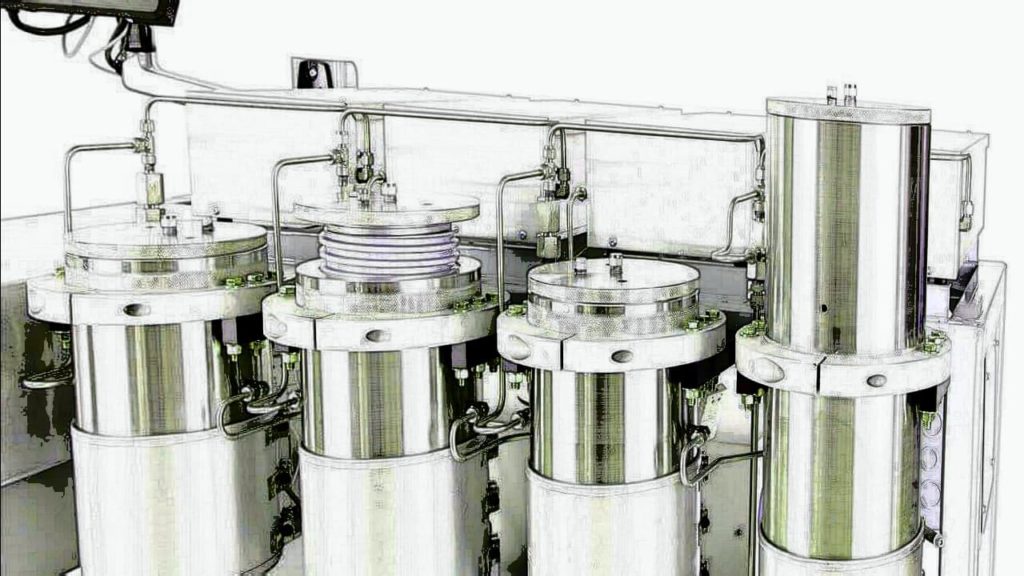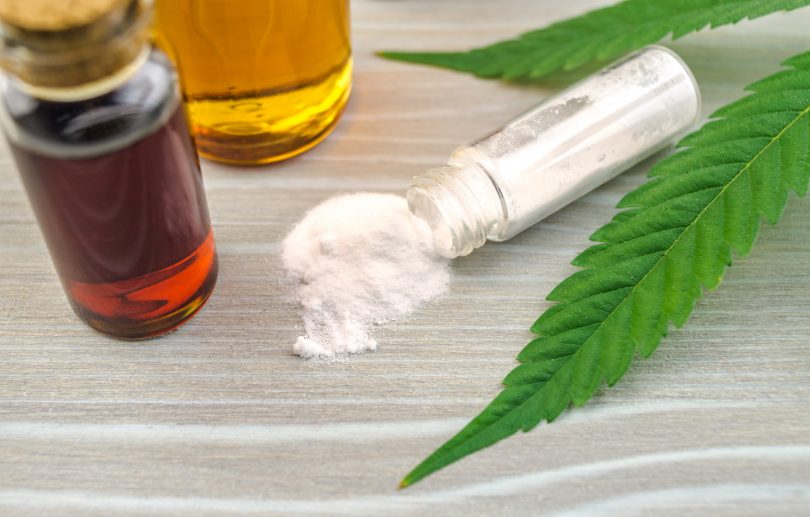When it comes to any product other than raw flowers, the cannabinoid in question needs to be extracted from the plant matter and processed into a substance that’s pure, potent, and easily measured.
If you’re trying to manufacture a product with a very specific amount of any cannabinoid in it – medication for example that would require accuracy down to the milligram, cosmetics, supplements, and the like – you will need something called Isolate, in this case – CBG Isolate.
CBG Isolate is the purest form of cannabigerol available on the market. As the name suggests, it’s CBG isolated from every other compound. The final product is a white, powdery substance that’s over 99% pure. It can be added to everything including food, medications, cosmetics and more.
This week we have a deal on CBG Isolate – Starting at only $3,750/kilo. Please contact us directly at [email protected]
Looking for more opportunities? Subscribe to the CBD Flowers Business Newsletter
What is CBG?
CBG (cannabigerol), or rather CBGA, was discovered in the 1960s by none other than Raphael Mechoulam, an Israeli Professor who dedicated his life to medical cannabis research. Following the discovery of THC and CBD, Mechoulam and his partner Yehiel Gaoni isolated CBG.
CBGA (cannabigerolic acid) is just CBG that still has its carboxyl acidy group and can be found in completely raw cannabis plants. It’s one of the most important cannabinoids in existence – it’s a precursor to all other cannabinoids. It has since been rightfully dubbed, the Mother of All Cannabinoids.
Specifically, CBGA (cannabigerolic acid) is a direct line to three main cannabinoids: tetrahydrocannabinolic acid (THCA), cannabidiolic acid (CBDA), and cannabichromenic acid (CBCA). Once exposed to heat or light in process known as decarboxylation, THCA, CBDA, and CBCA will shed their carboxyl acid group and become THC, CBD, and CBC, respectively. When it comes to CBGA though, certain enzymes break it down and it is immediately converted to THCA, CBDA, or CBCA. This is why more THC means less CBG, because of the unique way these compounds interact and are synthesized.
Because of this, plants that do covert to CBG will have their highest cannabigerol content early in the flowering stage. In most cultivars, if left to fully mature, almost all CBG will be converted into other cannabinoids. However, as mentioned above, some hemp strains naturally produce high amounts of CBG rather than CBD or THC.
Medical Benefits
CBG has many potential medicinal benefits. Research has found it to be neuroprotectant, antioxidant, antibacterial, antifungal, and anti-inflammatory. It’s also believed to help treat gastrointestinal disorders, glaucoma, and might also have a positive effect on cancer – although more research is needed to fully verify these statements.
Why CBG Flowers Could Become The Trendiest Bud of 2020
A 2008 study found CBG to be beneficial in the treatment of MRSA due to its antibacterial and antifungal properties. Its neuroprotective properties may help people with Huntington’s disease, while further research has looked into its potential to treat bladder dysfunction. A more recent study has found CBG to be effective for increasing appetite.
CBG is also being used as a safe and effective antidepressant and its effects mimic those of SSRI medications. It’s also believed that CBG can boost production of the endocannabinoid Anandamide, which naturally increases dopamine levels as well as regulates various functions such as sleep, mood, and appetite.
What is Isolate?
As the name implies, this CBG Isolate is made by completely isolating the cannabidiol from all the other plant matter and compounds. That means all other cannabinoids, terpenes, flavonoids, and inactive compounds like plant waxes are stripped from the extract, leaving only CBD. The final product is a fine white powder that has over 91% – 99% CBG.
Because it’s odorless, tasteless, and highly concentrated, it’s the preferred extract for use in the manufacture of many medical, wellness, and retail products. Its purity means that 1 milligram of isolate equals exactly 1 milligram of CBG, whereas 1 milligram of less potent extract might have 0.5 milligrams of CBG, 0.3 milligrams of CBD, and 0.2 combination of other terpenes and compounds. This makes isolate very easy to use for specific dosing.
How is it made?

To make isolate, the CBG must be extracted from the plant – and there are numerous ways to do this. The industry gold standard and consumer favorite is CO2 extraction. The equipment is industrial and very pricey, but this method results in a very pure final product. A closed-loop system is used to cool CO2 to -56C, as the pressure inside the chamber is hiked up to 75psi.
The CO2 becomes “supercritical” at this stage as it sits somewhere between a liquid and gaseous state. The CO2 is then passed through the closed chamber and, almost like a solvent, the cannabinoids and terpenes are extracted and remain intact. This process is called Supercritical CO2 Extraction. There’s also Subcritical CO2 Extraction which used cheaper equipment, lower pressure, and results in smaller yields.
A more cost-efficient but equally effective method is with an ethanol extraction system. Ethanol extraction involves applying the solvent ethanol directly to the hemp plant in order to extract the cannabinoids. Ethanol extraction has gotten a bad reputation as being unsafe, but that’s simply incorrect. Ethanol extraction is actually an FDA-approved method of extraction compounds from various plants in order to make food and medicines.
There is one issue with ethanol extraction, however. Certain compounds easily co-extract with ethanol, and the one of concern here is chlorophyll. Chlorophyll is a molecule that absorbs sunlight and converts it into plant energy. It also gives plants their green color. When using ethanol extraction, the chlorophyll may need to be stripped away in a separate process.
What is CBG Isolate Used For?
Isolate can be used to make anything that has CBG in it – edibles, topicals, tinctures, softgels, nasal sprays, various pharmaceuticals, and the list goes on. Anything that requires accurate dosing and very specific measurments will benefit from isolate.
It’s even better if the isolate is manufactured in a GMP-certified facility GMP stands for Good Manufacturing Practice and it’s already a requirement in Europe, India, and many other countries/continents that all medications, supplements, and cosmetics must be GMP-certified.
And while the North American market is currently an unregulated free-for-all, this is expected to change over the next few years. GMP is the way of the future when it comes to the medical cannabis and hemp industries.
Final Thoughts
As you can see, there are many valuable uses for high-quality distillate. If you would like to purchase some, we have partnered with some leading companies who manufacture EU GMP-certified CBG Isolate.
Please contact us directly at [email protected] for more information, or use the contact form below:
To learn more about EU GMP products and deals, subscribe to the CBD Business Weekly Newsletter.









